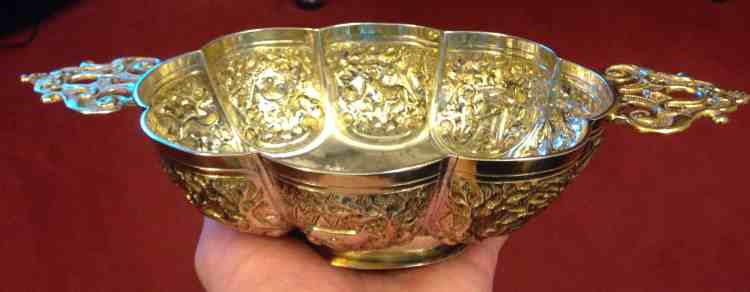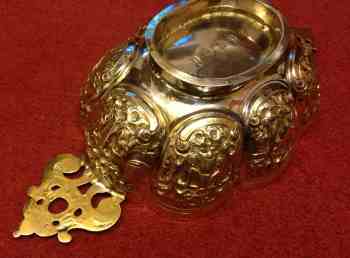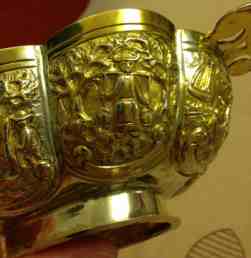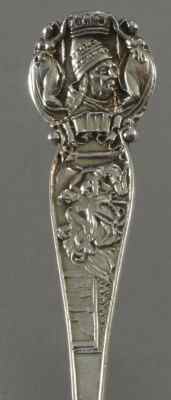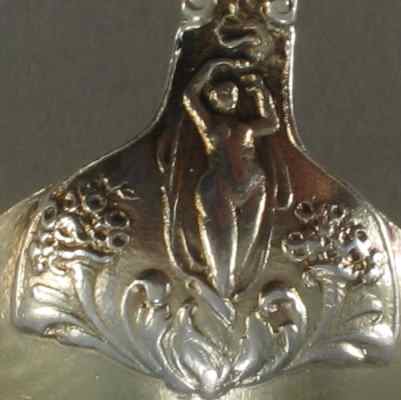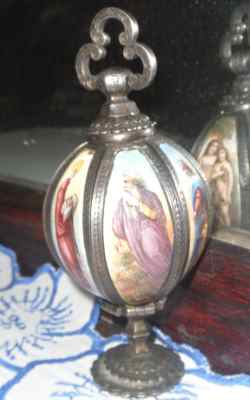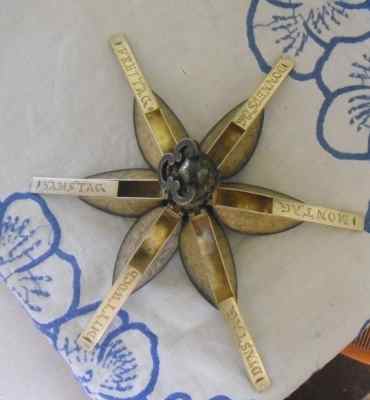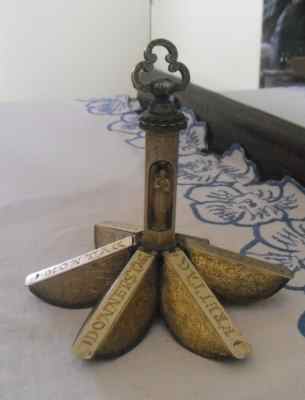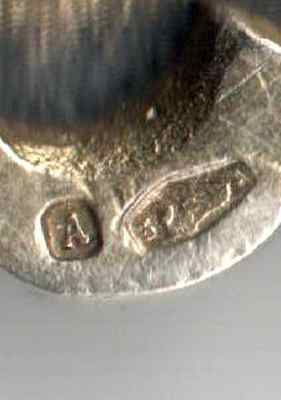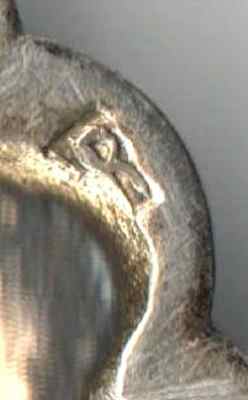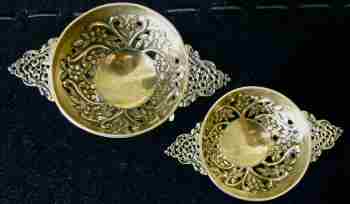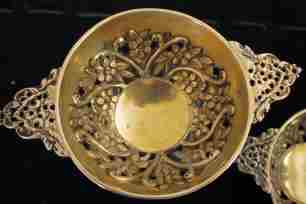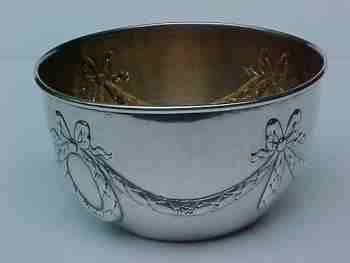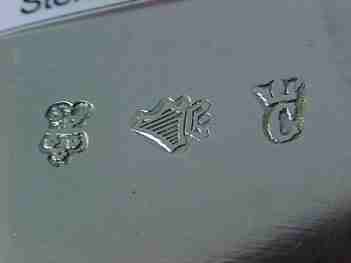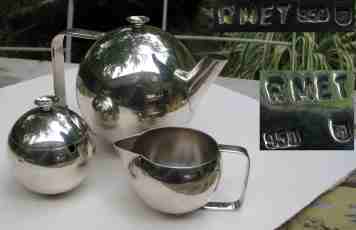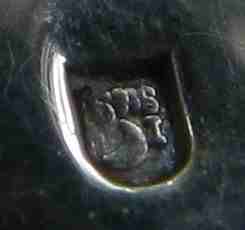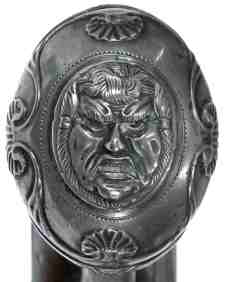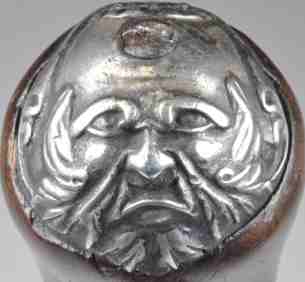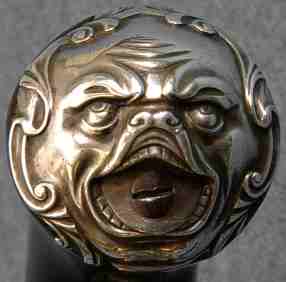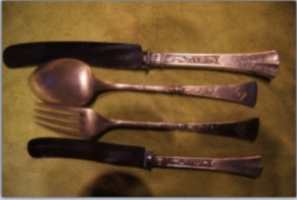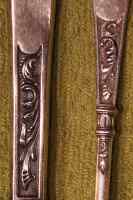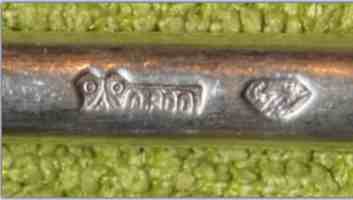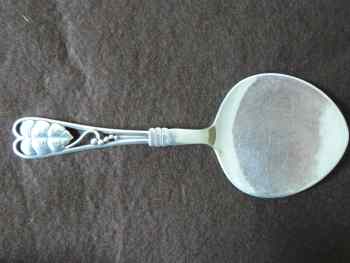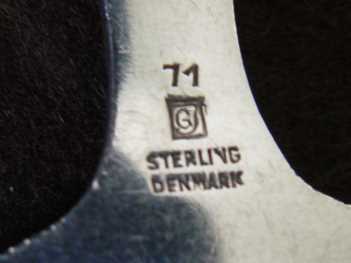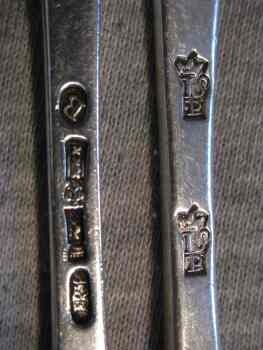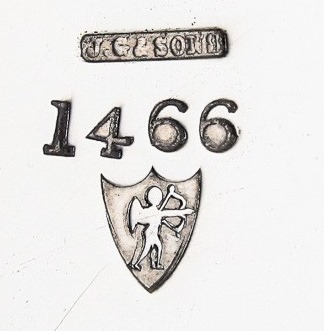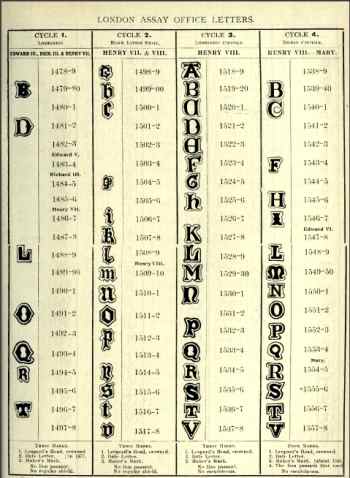
David McKinley presents:
The Date Letter on English Hallmarked Silver

A date letter first appeared on English silver plate in
the year 1697 as a result of legislation. In clause VIII
of the Act 8 & 9 William III c.8 which, among other
things, deals with the marks that must be applied to
assayed plate at Goldsmiths' Hall the following wording
is used: " .... and a distinct variable mark to be used
by the warden of the said mystery, to
denote the year in which such plate is made;..." This
legislation remained in place until 1999 in which year
the Government adopted European hallmarking practice
which does not require that an assayed item of plate
must be dated.
A similar system of alphabetical lettering had been used
on English assayed plate since 1478 but that this system
of lettering gave some date reference to the piece on
which it appeared was purely coincidental. In 1423 by
the statute 2 Henry VI. c. 13 "The Keeper of The Touch"
or "Touch Warden", who was responsible for striking the
leopard's head on all plate assayed and found to be of
the required standard, became liable to a fine if an
article so marked and found to be sub-standard, should
come to light. This statute was reinforced by the
statute 17 Edward IV. c. 1. which came into force on
16th. January 1478 and although "The Keeper of The Touch"
was again mentioned as the responsible warden this time
the other wardens were mentioned as well; ".......then
for non-sufficiency of the said Keeper and Worker, the
persons of the said craft of goldsmiths of the said city
of London, by whatsoever name or names they be
corporate, shall be chargeable and charged of the
forfeitures by like action or actions of debt as is
aforesaid in like manner and form as immediately before
is specified."...
click here

|
Welcome to new ASCAS members:
Mark Edwards - USA
Mary Kay Felton- USA
Maurice Meslans - USA
James Simpson - Scotland UK
Debbie Rindge writes:
... Please help identify the marks on this 9-1/8 inch long
silver salad server.
Some elements of the mark look Dutch, but not all.
What we see is: 1) stylized A, 2) gothic A, 3) gothic B, 4)
quadripartite shield, 5) leopard face?, 6) sword.
Thank you,
Debbie Rindge
It's a silverplate item made by Alfred Browett / Browett
Ashberry & Co, Birmingham. see my website at
http://www.silvercollection.it/electroplatesilverBtre.html
Giorgio Busetto
I don't know what is the source about the Dutch origin of
your cup. I'm unable to identify the marks, but I don't exclude
it's a Hanau silver of late 19th century.
Giorgio Busetto
Maurice Meslans writes:
... This spoon is not marked, it looks like a 20th c. souvenir
spoon, but it has a lot of patina, and I think it could be much
earlier. It is about the size of a sugar spoon, 15.8 cm.
I think it is an anti-papal piece, but I really don't understand
what it is saying. The bowl is gilt, there are no marks.
Originally I thought it might be German, but subsequently had
the metal tested. It turns out to be .925 fine, which would
point to Britain or the U.S.A. There is some similarity to the
Hunt pattern by Paul Storr, especially the shape of the bowl,
and ornate handle.
I should point out a few things in case they are not clear
enough in the photos. First the Pope looks like Leo X who headed
the Catholic Church during the reformation. The nude Venus I
think speaks for itself.
The slightly draped figures on either side of the Pope are
actually angels (their wings are visible on the back). They seem
to be holding a crown over the Pope, who is already wearing the
Papal tiara. Finally someone is sitting in a chair or throne,
seems to be comforting someone kneeling at his left. He seems to
be sitting in front of some windows, which could be Raphael’s
Logia. If I had to guess I would say the piece is early 19th c.
Any suggestion will be appreciated.
Maurice Meslans
Your item is a silver and enamel "pomander", possibly
Austrian, 2nd half of the 19th century. See my website at
http://www.silvercollection.it/dictionarypomander.html
Giorgio Busetto
Roberta Collins writes:
... Love receiving your newsletter and hope I can 'pick your
brain' for information as to the purpose of my two chased and
pierced handled bowls.
They are marked MJJ which I've identified as MATTHEW JOHN JESSOP,
the MJJ mark was registered in 1883; was still in London in
1903....moved to Birmingham? They measure 1 1/2"D x 3”W and 4
3/4"Wide from handle to handle.
Would really appreciate any help you can give.
Thank you.
Roberta Collins
I confirm. The mark belongs to Matthew John Jessop. He was
active in London from c. 1880 to 1911.
In my opinion your items had only decorative function and no
practical use, as many other objects identified as "bonbon dish",
"cake basket" or other similar definition. Don't forget that in
this period "novelties" were in great fashion.
Giorgio Busetto
Francois Costes writes:
... Please find attached two photos of an Irish silver bowl.
It weighs 124 g. Height is 65 mm, and diameter at the top is 11
cm.
The inside is gilded. According to two local collectors the
piece could have been the waste bowl of a tea set. And given the
ornamentation (ribbons and garlands) it could date to the late
18th or the early 19th century.
Three marks are stamped on the bottom:
[1] The first one looks like the coat of arms of Tullamore
county (bird with open wings at the top and three flowers of
wheels underneath).
[2] The second one is the well-known crowned harp (sterling
hallmark for Ireland).
[3] The third one, a crowned C, must be the maker's mark.
The Hibernia mark is missing which indicates that the bowl was
not assayed in Dublin.
Can the ASCAS members help me identify the first and third marks?
Thanks again for your excellent work.
Best regards,
Francois Costes
I am doubtful about the Irish origin of these marks. I can't
exclude they are pseudo hallmarks of Hanau silver.
By the way: the waste bowl is present in American tea and coffee
sets of 19th century, but I don't remember have ever seen an
English or Irish waste bowl (while a "harp mark" on Hanau silver
would be the first time).
Any suggestion by ASCAS members will be appreciated.
Giorgio Busetto
John Lewis writes:
...I acquired a Tea Set with some puzzling marks (950).
It 'feels' like silver, but am doubtful whether a tea service
would have been made with this fineness of silver.
Any help would be appreciated.
John Lewis
Karin Sixl-Daniell writes
I am writing with a response to Charles Deheselle's question
about the flatware he has.
It was made by Jezler of Schaffhausen (founded in 1822),
Switzerland and was made of 800 fineness, as indicated by the
mark 0.800 as well as the control mark next to the maker's and
numerical fineness mark.
This control mark was in use from 1882-1933.
Karin Sixl-Daniell
Yvonne Barber writes
I checked my identical piece and it is marked design 71. I
therefore think it may simply be a typographical error on the
925-1000 site as the design that follows it is also described as
number 81.
Yvonne Barber
Janjaap Luijt writes
The left marks are by: Frederik Precht from Amsterdam, who
worked 1744-1787. The date letter B is most likely the one used
in 1761.
Janjaap Luijt
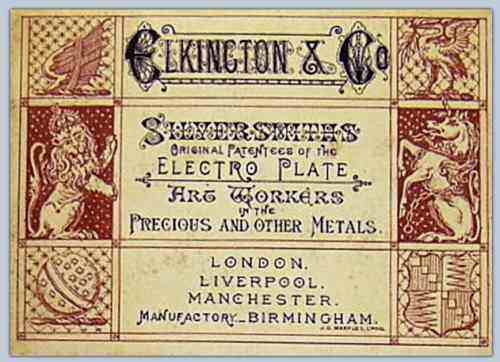
|
This month ASCAS presents an 1876 trade card of
Elkington & Co
ELKINGTON & CO
SILVERSMITHS
Original Patentees of the
Electroplate
Art Workers
in the
Precious and Other Metals
London Liverpool Manchester
Manufactory Birmingham
Elkington & Co. are one of the most important names in
English silver and certainly the most important in
silver plate. They began life in Birmingham as a company
of silversmiths in 1836, and experimented with improving
gilding techniques. By 1838 they had discovered and
patented a new way to electroplate one metal on to the
surface of another. By 1840 production was already
underway with silver electroplated wares. The company
received financial backing from Josiah Mason in 1842 (renaming
the firm Elkington, Mason & Co between 1842 and 1861)
and was extremely successful. It introduced
electrotyping as a new method of production for silver
plated items. Elkington & Co exhibited at the Great
Exhibition of 1851 with enormous success.
|
"A WORD per MONTH"
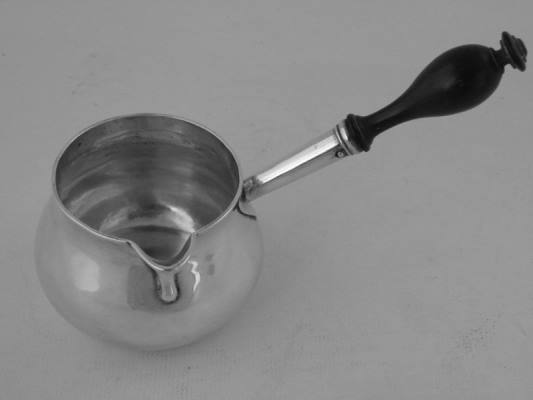
BRANDY SAUCEPAN
SKILLET
The brandy saucepan is a small vessel of circular
bulbous baluster form bulging towards the bottom. In
some cases the bowl is cylindrical.
It has everted rim and a short spout at right angles to
the turned wooden or ivory handle pinned to a silver
ferrule.
Brandy saucepans rest on a flat bottom and have changed
little in form from the Queen Anne period through the
mid-19th century.
Those in the early 18th century tend to be smaller,
while the latter 18th century are larger, often half
pint in capacity.......
more
|
"A SILVERSMITH per MONTH"
|
|
JOHN GRINSELL & SONS
JOHN GRINSELL & SONS LTD
A business established in
Birmingham before 1864 as Grinsell & Bourne.
When the partnership was dissolved (1871), John Grinsell
started a new business with his sons (Thomas Bywater
Grinsell, James Erazmus Grinsell, Lorenzo Grinsell and
Joseph Charles Grinsell) as John Grinsell & Sons.
The firm was active at Victoria Works, 57 Tower Street,
St. George's, Birmingham.
Show rooms were opened at 13 Charterhouse Street,
Holborn Circus, London and 73 West Nile Street,
Glasgow....
more
|
"A CREST per MONTH"
EWING
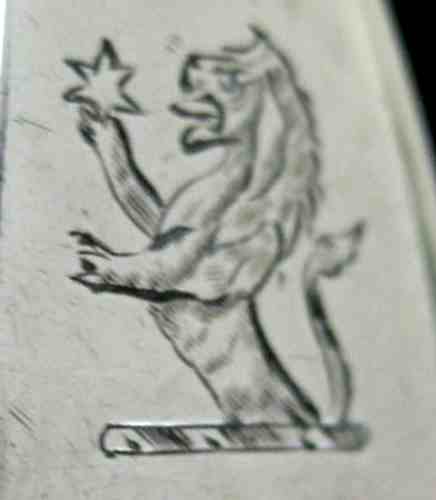
|
A Scottish family
A demi-lion, in dexter a mullet. The Latin motto is "Audaciter"
(boldly).
The crest was found in a silverplate ladle marked Mappin
& Webb, Princes Plate
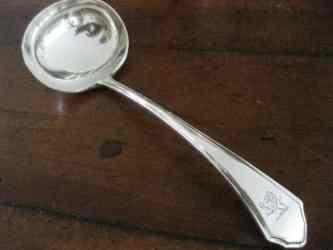


|
Closing our OCTOBER 2013 edition of
ASCAS Newsletter I hope you have appreciated its content.
Your comments, suggestions and advice will be of great help.
My thanks to Yvonne Barber, Peter Bower, Roberta Collins,
Francois Costes, Daniel Hardy, John Lewis, Janjaap Luijt, David
McKinley, Maurice Meslans, Natali L., Debbie Rindge and Karin
Sixl-Daniell for their precious contributions.
Giorgio Busetto
Secretary
DISCLAIMER AND PRIVACY POLICY
ASCAS is a community of people having a common
interest in antique silver.
It is a non-profit association without commercial links.
Membership is open to whomever has a true interest in
this subject matter.
ASCAS has no real property and no fees are requested nor
accepted from members.
ASCAS keeps in touch with its members only through
periodical newsletters, e-mails and web-site updating
and ignores and is not responsible for any other
activity pursued by its members.
Likewise, ASCAS is not responsible for opinions,
evaluation and images displayed, and in any form
published or supplied for publication, by its members
who, in any case, maintain the property of their works
and assure the respect of national and international
legislation about Intellectual Property.
ASCAS does not have the full addresses of its members (only
town, country and e-mail address are requested for
membership).
ASCAS handles and protects with care its members' e-mail
addresses, will not disclose the addresses to third
parties, will use this information only to reply to
requests received from members and for communications
strictly related to its activity.
These rules are expressly accepted by submitting the
membership request.
|
|
 newsletter
# 113 October 2013
newsletter
# 113 October 2013










